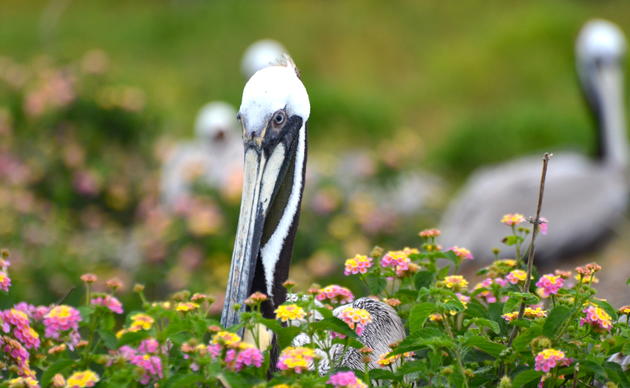Forster's Tern
Forster’s Terns are sometimes referred to as “Marsh Tern” because they utilize this particular habitat type for breeding and foraging. Nesting habitat is in fresh, brackish or saltwater marshes on high areas, usually within clumps of vegetation. On the Gulf Coast, the species nests on islands and coastal marshlands on the ground, building nests on windrows of vegetation often in cordgrass, dry eelgrass, and sea oxeye. In 1974 Oberholser reported that the Texas population had declined slowly since World War II and in the 1970s and 1980s the species ranged from 1,210 to 4,035 pairs in the state. For the majority of this time period, more than 80% of the Texas Forster’s tern population nested on islands along the northeastern one-third of the coast. The species has the ability to colonize newly created marsh-like habitat for nesting and can benefit from management and restoration of new wetland areas.
For more information on Forster's Terns, including identification tips, visit their page on the Cornell Lab of Ornithology.
Text References
- King, K. A., T. W. Custer, and J. S. Quinn. 1991. Effects of mercury, selenium, and organochlorine contaminants on reproduction of Forster's terns and black skimmers nesting in a contaminated Texas bay. Archives of environmental contamination and toxicology 20:32-40.
- Mcnicholl, M. K., P. E. Lowther, and J. A. Hall. 2001. Forster's Tern (Sterna forsteri).in A. Poole, editor. The Birds of North America Online. Cornell Lab of Ornithology, Ithaca
- Mossman, M. J. 1989. Wisconsin's Forster's Tern recovery plan. Passenger Pigeon 51:171-186.
How you can help, right now
Join Audubon Texas Today
Becoming a member supports our local work protecting birds and the places they need.
Consider a Legacy Gift for Texas
Planned gifts and bequests allow you to provide a lasting form of support to Audubon Texas.
Subscribe to Our Newsletter
Subscribe to our newsletter for updates about Audubon Texas's conservation work, and news about our activities and local events.




